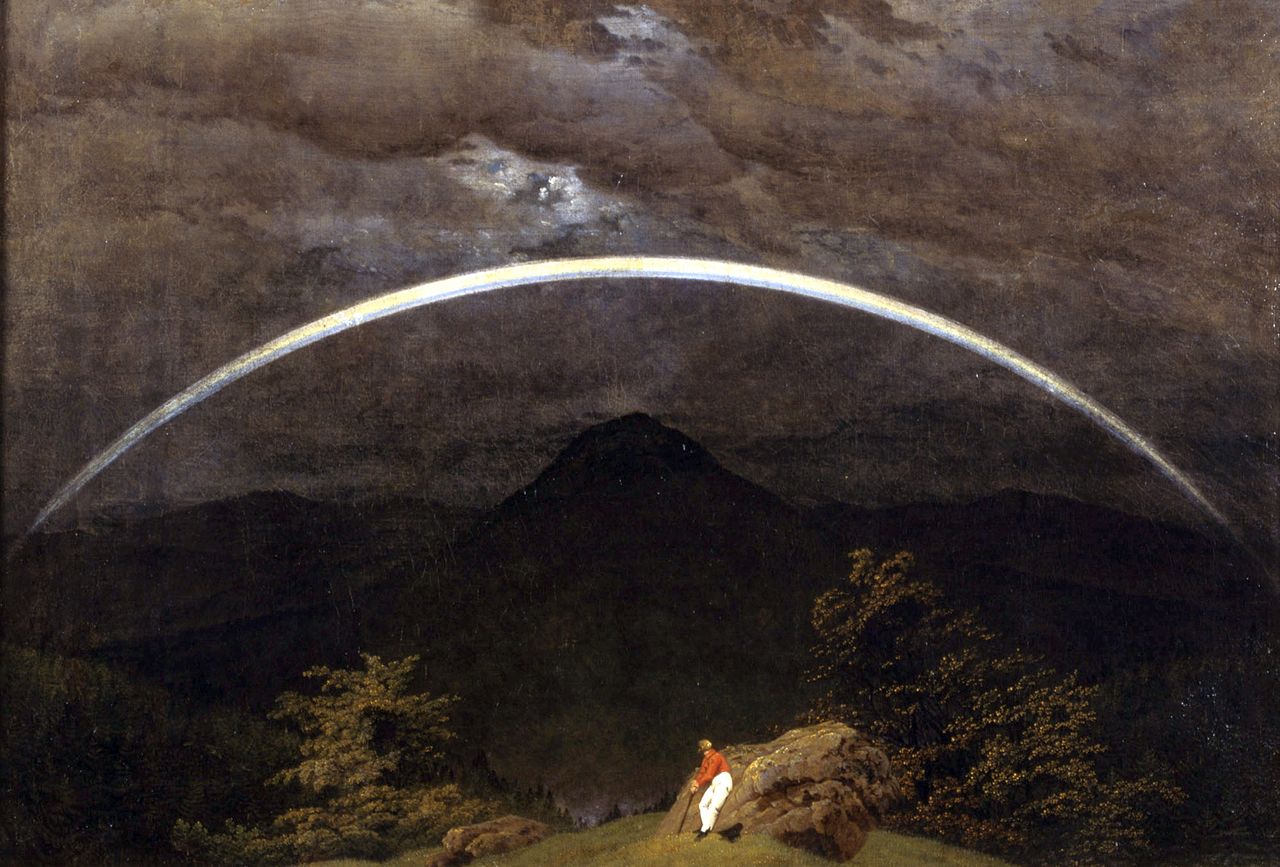The Sicilian artist Alessandro Piangiamore presented a work by the German Romantic painter Caspar David Friedrich for the column.
“Gebirgslandschaft mit Regenbogen (Mountain Landscape with Rainbow) is imbued with an immense force, certainly due to the disparity between man and nature. A tiny little man gazing at a rainbow, an ephemeral wonder of nature and a bridge of hope. I like that little man; I imagine him hoping the rainbow won’t vanish, knowing full well that his expectation will be disappointed.”
The artwork was created between 1809 and 1810, following a journey through Germany along the Baltic Sea coast.
In the foreground, we see a wanderer leaning on a rock and a walking stick. He wears white trousers and a red shirt, which starkly contrast with the tones of the surrounding environment. His gaze is turned toward the background, where a dark abyss opens up.
The landscape is composed of a succession of shrubs and sloping mountains that converge toward the center of the painting. Above them rises a light in the form of a rainbow.
It is typical in Friedrich’s works to find a clear contrast between the foreground and background, symbolizing the division between the physical and spiritual planes of existence.
This is also evident in this painting. In the foreground, sunlight illuminates the foliage and the traveler’s clothing, while the rest of the image is shrouded in the darkness of night. These two worlds are united by the presence of the rainbow, which, in the story of Noah’s Ark from the Book of Genesis, symbolizes the covenant between God and humanity.
Piangiamore continues: “I like that little figure especially because it reminds me of a painting my grandmother kept in the dining room. There was a river, a watermill, mountains, and a small, indistinct man with a red shirt (just like in Friedrich’s painting), tiny yet commanding within the landscape.
That’s when I think I fell in love with art. I used to climb onto the sofa to look at it up close. I still remember it clearly; the more I talk about it, the more vividly it comes back to life.”
Biography
ALESSANDRO PIANGIAMORE | Born in Enna in 1976. He lives and works in Rome and Turin. Among his most recent exhibitions are the solo shows La Chair des choses (Dans la poussière, les abeilles et le pétrole font la lumière) at the Centre d’art contemporain La Halle des bouchers in Vienne, curated by Marc Bembekoff and Xavier Jullien, and La Chair des choses (Une Rose et quatre vents) at Espace arts plastiques Madeleine-Lambert in Vénissieux, also curated by Marc Bembekoff and Xavier Jullien. He also exhibited Marango at Casa Italiana Zerilli-Marimò in New York, in collaboration with Magazzino Italian Art, curated by Vittorio Calabrese.
Group exhibitions include Luogo e Segni at Punta della Dogana, Pinault Collection, Venice, curated by Martin Bethenod and Mouna Mekouar; Nature is what we see, at the Giancarlo and Danna Olgiati Collection in Lugano, Switzerland; and Ragione e Sentimento at the National Gallery of Modern Art in Rome.
